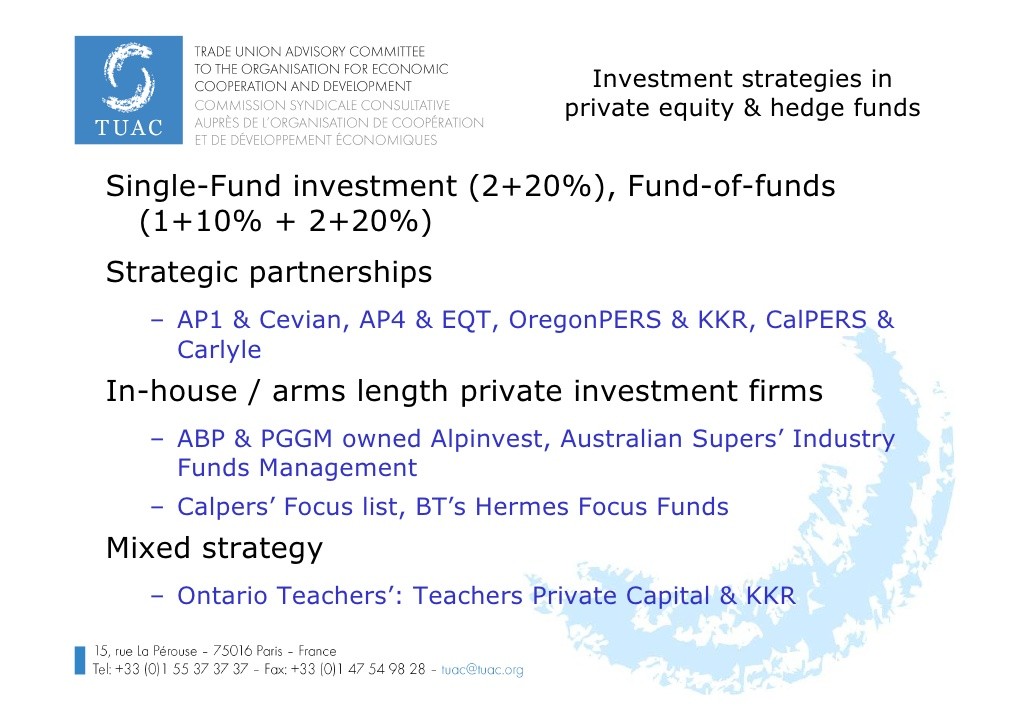CalPERS adapts equity strategy to bonds Pensions & Investments
Post on: 12 Июль, 2015 No Comment

Shift to 130/30 targets a lethargic international portfolio
CalPERS’ strategy should add 50 basis points of returns annually, Eric Busay said.
SACRAMENTO, Calif. — CalPERS’ decision last week to convert its $6.7 billion international fixed-income portfolio to a 130/30 strategy reflects officials’ desire to squeeze additional returns from the fund’s lackluster foreign bond portfolio.
The new strategy will permit CalPERS’ external international bond managers to go up to 130% long and 30% short. Many pension funds are adopting 120/20 or 130/30 equity strategies, but this is a new development in bond portfolios.
In addition, the $229 billion California Public Employees’ Retirement System, Sacramento, will permit its external international bond managers to invest up to 10% of their portfolios in international high-yield bonds.
The managers are: Baring Asset Management. London, which runs $1 billion for CalPERS; Bridgewater Associates Inc. Westport, Conn. $1.3 billion; Julius Baer Investment Management Inc. New York, $1.3 billion; Rogge Global Partners. London, $1.7 billion; and Western Asset Management, Pasadena, Calif. $1.4 billion.
The new strategy should boost the portfolio’s information ratio, a measure of returns relative to risk, to 0.8 from 0.4. Eric Busay, portfolio manager in CalPERS’ global fixed-income group, expects to see the international fixed-income portfolio earn an additional 50 basis points of annual returns.
A handful of bond managers have been using shorting and leveraging strategies for some years. Those tools are becoming increasingly important as returns have softened and investors are more willing to loosen constraints on managers.
Brandywine Global Investment Management LLC, Philadelphia, has been offering the capability of going long and short in its global bond portfolios for about two years, while Baring has been offering long/short for four years. Barclays Global Investors, San Francisco, is considering adding a long/short strategy to its fixed-income offerings.
More opportunity
Five years ago, managers had limited capability to short international bonds, but those opportunities have increased, CalPERS CIO Russell Read told the board at the meeting last week. Plus, the European high-yield bond market has grown substantially in recent years, he added.
The biggest changes in the bond market have occurred in the credit markets, said Marino Valensise, head of fixed income and currencies at Baring, which runs $1.25 billion in long/short fixed-income strategies. There has been “quite a learning curve” in the past five years, with the increased use of credit derivative swaps and over-the-counter transactions, he said.
Mr. Read said that including shorting, leverage and high-yield bonds in international bond portfolios was “a natural evolution,” likening it to the shift from core to core-plus portfolios domestically. Core-plus portfolios typically permit bond managers to invest up to 20% of assets in assets in high-yield or international debt.
The need to spice up returns has become pressing. Last year, as central banks started tightening interest rates, CalPERS’ international bond managers gave up all of the alpha they had accumulated in the preceding nine years.
In the 12-month period ended Dec. 31, the managers underperformed the Lehman Brothers’ International Fixed Income index by 76 basis points.
“That 76 basis points of alpha flattened out everything over the past 10 years,” said Mr. Busay. In the 10 years ended Dec. 31, the foreign bond portfolio gained a meager eight basis points on an annualized basis.
Warning of risks
Michael Schlacter, managing director at Wilshire Associates Inc.. Santa Monica, Calif. CalPERS’ general consultant, warns there are risks involved in applying the 130/30 strategy to the fixed-income side.
“The added elements of the duration of individual bonds and lesser liquidity of fixed-income investments vs. large-capitalization stocks add the prospect of risks not found in the 130/30 equity program,” Mr. Schlacter wrote in a memo to the board.
Managers can minimize that risk by taking bets in more liquid markets. Brandywine, for example, generally takes short bets in very liquid currencies or sovereign bonds, said Adam Spector, a director at the firm. “The biggest risk is you have more ways to be right and more ways to be wrong.”
Brandywine is one of four international bond managers CalPERS named to a pre-approved list of international managers. As of Dec. 31, CalPERS had not funded the managers in that pool, which also holds AllianceBernstein (AB ) LP (AB ), New York; Mondrian Investment Partners Ltd.. London; and Pacific Investment Management Co. LLC. Newport Beach, Calif.
Brandywine runs $800 million in global long/short fixed-income strategies within its $20 billion global fixed-income group. “This tends to be accepted more readily by those with an active alternative investment program who have seen the benefits of shorting,” said Mr. Spector.
A long-only strategy can be limiting, especially when thinking in benchmark-relative terms, he said. For example, if the firm holds a negative opinion on a country, but that country has a small weighting in the benchmark, underweighting that country might not have as strong of an effect on performance as shorting would.
BGI runs long/short strategies in global and domestic equities and is considering pushing the strategy to fixed income as well, said a source who asked not to be identified because of the firm’s policy not to discuss shorting vehicles with the press. He declined further comment.














